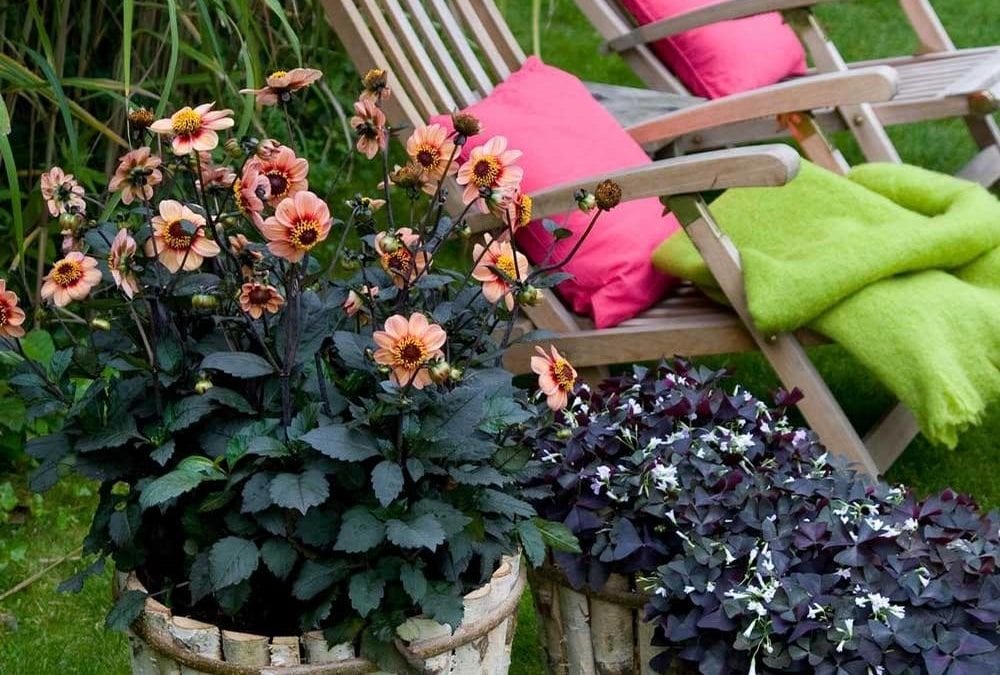Have we talked about garden journaling lately? Mid-summer is an especially nice time to start. Everything is just so beautiful that you’ll want to remember it and it’s helpful to make notes of particular diseases or pests that may haunt your yard year after year. Phenology is the study of seasonal phenomena, especially in relation to animal activity, plant development and climate change. So take a couple of minutes to stroll through and observe what is going on in your garden. Next season, you can look at your notes and give yourself a head’s up on when sawfly larvae attack your mugo pine and the Japanese beetles invade your rose border. Or even better, transfer your notes from each year into a master calendar.
Now let’s talk container plantings. Does the watering of plants in containers seem like a no-brainer? When it’s hot, everything needs lots of water, right? Not always! When it’s painfully hot and humid for you, plants can go into a state of suspended animation and shut down their water usage system. This is especially true for plants in pots since their roots get hotter than those of plants in the ground. The moral of this story? Always check soil moisture before watering. If a container plant looks stressed and the soil seems damp, consider moving it into a cooler and shadier location.
But it’s been dry and last week’s super hot temps are surely having an effect on anything that you’ve planted in containers this season, from annuals to vegetables. The heat will help all of those plants to fill in quickly. So after checking them before you water, fertilizing those containers is your next priority. All that watering that you may have been doing is washing the nutrients out of the soil, especially in potted plants. Use a water-soluble fertilizer once a week or apply a dose of a slow release product. If you use the slow-release fertilizers, be sure to work it into the soil a bit so that it doesn’t float right out of your pots.
Don’t forget that deadheading spent flowers is essential for continued bloom of both annual and perennial plants. Roses appreciate the extra attention, too. And go ahead and pinch back any leggy or straggly growth. Your plants will be stronger and bushier in the long run and you will get more blossoms.
Watch for insect pests when the temperatures really begin to climb. Spider mites and white flies love the hot, dry weather that is typical during the summer months. Observation and inspection are the keys here. Look carefully at your plants as you water. Learn to recognize the difference between healthy looking foliage and those leaves that show signs of stress. Turn a few over and look at the growing tips for hints of disease and infestations. When you learn what is normal, it’s easier to spot what is abnormal.
And after all of this effort, don’t forget to enjoy what you’ve created. Sitting on the screened porch on a soft summer evening is a lovely experience. Have a glass of something. Be delighted and mesmerized by the miniature fireworks of the lightning bugs. Or are they fairies, like Tinker Bell? Clap your hands and see.


